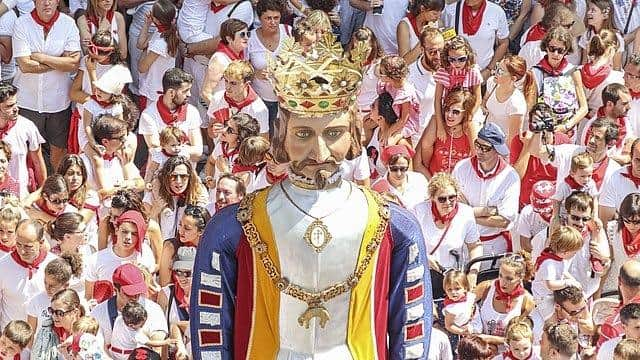San Fermín Festival Spain 2022: What is the Running of the Bulls festival in Pamplona?
Festival of Saint Fermin (Spanish: “Fiesta de San Fermín”) is historically rooted in Pamplona, Spain, and has been since the 12th century.
After 2 years of cancellations due to COVID-19, it will begin at noon on Wednesday July 6 and end at midnight on Thursday, July 14.
Advertisement
Hide AdAdvertisement
Hide AdThe festival is held in honour of the city’s first bishop and patron saint, Saint Fermin.


Why does Spain celebrate “Sanfermines”?
Saint Fermin of Amiens is the co-patron of Navarre, the Spanish region where Pamplona is located, and the festival is held in his honour.
On July 7, the statue of Saint Fermin is carried through the streets of Pamplona for people to pay their respects.
You’ll also see many red scarves (or “pañuelos”) which are religious in origin and highly characteristic of this festival.


Jesús Labari, the late parish priest of Pamplona’s San Lorenzo Church said: “For religious ceremonies in honour of a saint, if the saint is a martyr and died for his beliefs, the priests dress in red.
“In the case of the festival in honour of San Fermín, we do this because he was martyred and the thing about the red scarf is a performance by the people of this religious custom.”
Why is the festival called “The Running of the Bulls”?
The bull run is the world-famous aspect of the San Fermin festival, and it is why thousands of tourists flock to Pamplona every year.


Runners lead (or flee from) bulls along an 825 metre stretch of walled-off streets.
Advertisement
Hide AdAdvertisement
Hide AdBefore it begins, all runners gather together and take a moment to entrust themselves to their patron saint by saying: “We ask San Fermín, as our Patron, to guide us through the Bull Run and give us his blessing.”
They repeat the chant three times before the bull running commences at 8:00AM sharp.
A rocket is fired to announce that the gates have been opened, marking the beginning of the event.
Runners then lead the bulls from the Santo Domingo corrals to the bullring, where the same bulls later are involved in a bull fight.
It is very dangerous and runners have been gored by the bulls in the past, especially since this race happens eight times during the course of the festival.
What else is on? Do you need to see bulls at the Saint Fermin Festival?
If you’re uncomfortable about the treatment of bulls in the streets or bullring then don’t worry, you’re not alone.
In fact, it may surprise you to know there’s a lot more to this fiesta than just the bulls. For example, it is well known that this is one of the world’s best impromptu music festivals.
Anyone who has lived in Pamplona will tell you that when they say the celebrations run all week long, they truly mean it, and this includes the music.
Advertisement
Hide AdAdvertisement
Hide AdLocals and tourists alike enjoy “Las Dianas” (the city’s marching band) passing through the streets along with other musical talents.
A popular choice is the affordable “jamon bocadillo” (a Spanish sandwich) which can be washed down by drinking “sangria” out of a wineskin. ¡Qué tradicional!
¡Viva San Fermín! Celebrating the legacy of Spain’s most famous festival
Almost 100 years ago back in 1926, famous writer Ernest Hemingway wrote his novel “The Sun Also Rises” (also known as “Fiesta”), about the Festival of San Fermin.
This made the festival famous outside Spain, attracting people from all over the world to come to Pamplona’s greatest celebration.
Hemingway famously described it as a “fiesta that went on for seven days.”
To this day the quote stands true with Sanfermines’ celebrations remaining unwavering both day and night.
